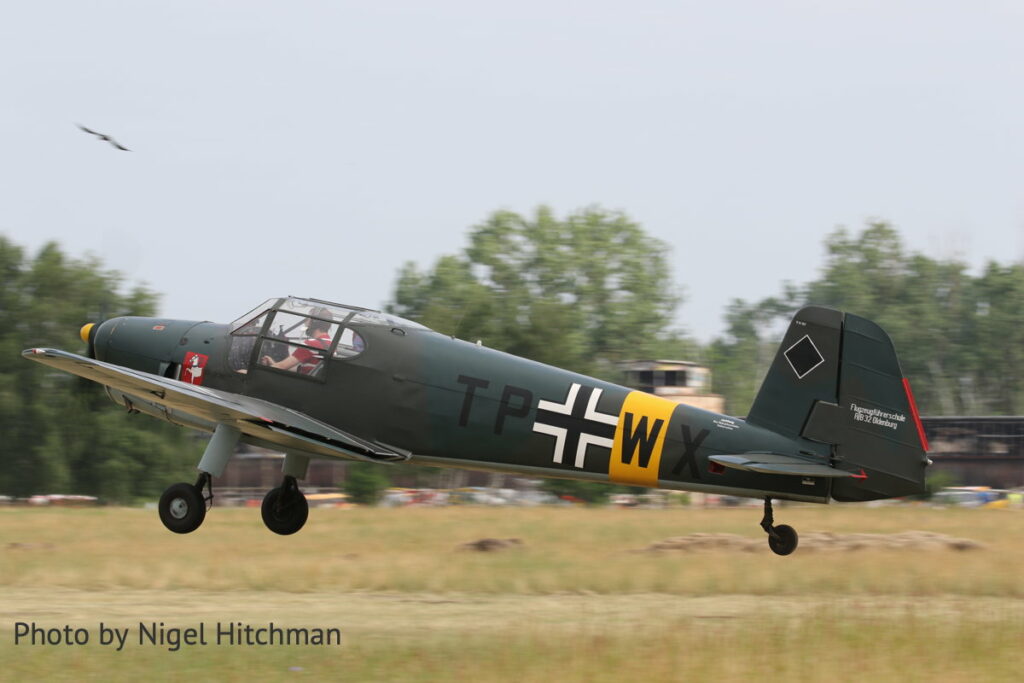
Have you ever wondered what it would be like to fly in a vintage aircraft? Well, let me introduce you to the Cessna 195, an iconic plane that takes you back in time. In this article, we will delve into the fascinating world of the Cessna 195 and uncover its history, features, and why it remains a beloved aircraft among aviation enthusiasts.
Once you lay your eyes on the Cessna 195, you can’t help but be captivated by its classic, streamlined design. This airplane, also known as the C195, was first introduced in the late 1940s and quickly became a popular choice for both private and commercial use. With its distinctive bulbous nose, sleek lines, and spacious interior, the Cessna 195 exudes a timeless charm that appeals to aviators and aviation enthusiasts alike. As you read on, you’ll discover more intriguing details about the Cessna 195 and why it continues to be a cherished part of aviation history. So, buckle up and get ready to embark on an exciting journey through the world of the Cessna 195!

History of the Cessna 195
Development of the Cessna 195
The Cessna 195 is a classic aircraft that was developed by the Cessna Aircraft Company in the early 1940s. It was designed as a larger, more powerful and luxurious successor to the Cessna 165 and Cessna 190 models. The development of the Cessna 195 began in response to the growing demand for a larger aircraft that could carry more passengers and cargo.
Introduction of the Cessna 195
The Cessna 195 was introduced in 1947 and quickly became popular among pilots and aviation enthusiasts. It was known for its sleek design, spacious cabin, and exceptional performance capabilities. The aircraft was primarily used for personal and commercial purposes, as well as for military applications. Over the years, it gained a reputation for its reliability, versatility, and overall excellence.
Features and design of the Cessna 195
The Cessna 195 was designed with a range of features and a unique design that set it apart from other aircraft of its time. One of its notable features was its larger and roomier cabin, which provided ample space for up to five passengers and their luggage. The aircraft also featured a distinctive round nose and a sleek, elegant exterior design. Additionally, the Cessna 195 boasted exceptional visibility with its large windows, allowing pilots to have an unobstructed view of the surroundings.
Specifications of the Cessna 195
Dimensions and weight
The Cessna 195 had a wingspan of 36 feet and 3 inches, a length of 26 feet and 10 inches, and a height of 7 feet and 10 inches. It had a maximum takeoff weight of 3,200 pounds, making it a sturdy and well-built aircraft.
Engine and performance
The Cessna 195 was powered by a Jacobs R-755 radial engine, which produced 300 horsepower. This engine enabled the aircraft to achieve a cruising speed of around 150 miles per hour and a maximum speed of 170 miles per hour. The Cessna 195 had a range of approximately 700 miles, allowing for efficient and reliable long-distance travel.
Fuel capacity and range
The Cessna 195 had a fuel capacity of 60 gallons, which provided it with a range of up to 5 hours of flight time. This allowed pilots to cover considerable distances without the need for frequent refueling stops.
Variants of the Cessna 195
Cessna 195A
The Cessna 195A was an upgraded version of the original Cessna 195, introduced in 1948. It featured a more powerful Jacobs R-755-9 engine, which increased the overall performance and capabilities of the aircraft.
Cessna 195B
The Cessna 195B, introduced in 1952, incorporated several improvements over its predecessors. It featured a larger fuel capacity, improved electrical system, and a redesigned cowling, among other enhancements.
Cessna 195C
In 1954, the Cessna 195C was introduced, offering further refinements to the aircraft. It featured a new set of landing gear and improved cabin heating system, providing passengers with added comfort and convenience.

Utilization of the Cessna 195
Commercial applications
The Cessna 195 was widely used in commercial aviation. Its spacious cabin and impressive performance capabilities made it an ideal choice for small-scale passenger and cargo transportation. Many airlines and private operators employed the Cessna 195 for short-haul flights, offering a comfortable and efficient means of transport.
Private use
The Cessna 195 was also a popular aircraft among private pilots and aviation enthusiasts. Its luxurious cabin, excellent visibility, and reliable performance made it a sought-after choice for personal flying. Whether for leisure trips or cross-country adventures, the Cessna 195 provided pilots with a truly enjoyable and memorable flying experience.
Military applications
The Cessna 195 found utility in various military applications as well. It was used for pilot training, reconnaissance missions, and even light transport duties. Its versatility, exceptional performance, and reliability made it a valuable asset for the armed forces.
Notable Features of the Cessna 195
Bigger and roomier cabin
One of the standout features of the Cessna 195 was its spacious cabin. Passengers and pilots alike enjoyed the ample legroom and headspace, allowing for a comfortable journey. The large windows provided a panoramic view of the surroundings, adding to the overall experience.
Elegant design
The Cessna 195 had an elegant and streamlined design that made it visually appealing. Its round nose and sleek exterior gave it a distinct and sophisticated look, making it a standout among other aircraft.
Exceptional visibility
The Cessna 195 offered pilots exceptional visibility due to its large windows and strategic placement of instruments and controls. This allowed for enhanced situational awareness and safer flying conditions.
Advantages of the Cessna 195
Stability and control
The Cessna 195 was known for its exceptional stability and precise control. Pilots appreciated its responsive handling characteristics, allowing for smooth takeoffs, landings, and maneuvers.
Cruising speed
With a cruising speed of 150 miles per hour, the Cessna 195 provided pilots with an efficient and relatively fast means of transportation.
Short takeoff and landing
The Cessna 195’s design and performance capabilities allowed for short takeoff and landing distances. This made it suitable for operations in small airports and airfields, providing pilots with additional flexibility.
Pilot Experience in the Cessna 195
Handling characteristics
Pilots who flew the Cessna 195 praised its handling characteristics. The aircraft was known for its stability, responsiveness, and smooth control, providing pilots with a comfortable and enjoyable flying experience.
Cockpit layout
The cockpit of the Cessna 195 was well-designed and ergonomically arranged. The instruments and controls were easily accessible, and the overall layout allowed for intuitive operation.
Performance considerations
When flying the Cessna 195, pilots had to consider factors such as weight and balance, as well as wind conditions, to ensure optimal performance. Adhering to the recommended procedures and limitations ensured a safe and efficient flight.
Maintenance and Servicing of the Cessna 195
Regular inspections and checks
To maintain the airworthiness of the Cessna 195, regular inspections and checks were necessary. These included routine maintenance tasks, such as checking fluid levels, inspecting the engine, and ensuring all systems were functioning properly.
Common maintenance tasks
Common maintenance tasks for the Cessna 195 included oil changes, spark plug replacements, and cleaning and lubrication of various components. These tasks were typically carried out by certified mechanics.
Special considerations
Given the age of the aircraft, some unique maintenance considerations were necessary for the Cessna 195. This included sourcing appropriate spare parts and ensuring compliance with modern safety and performance standards.
Ownership and Investment in the Cessna 195
Acquisition costs
The acquisition cost of a Cessna 195 varied depending on factors such as condition, age, and included avionics. Vintage models could be found for around $100,000, while fully restored and upgraded versions could fetch prices well over $250,000.
Operating expenses
Operating expenses for the Cessna 195 included fuel costs, insurance, hangar fees, regular maintenance, and occasional repairs. These expenses could vary depending on factors such as usage, location, and the specific aircraft’s condition.
Resale value
The Cessna 195, being a classic and sought-after aircraft, held its value well over the years. Properly maintained and cared for examples could retain their value and even appreciate over time.
Conclusion
The Cessna 195 is a truly remarkable aircraft that has left an indelible mark on aviation history. Its development, introduction, and utilization in various capacities have solidified its place as a beloved and respected aircraft. From its spacious and elegant design to its exceptional performance capabilities, the Cessna 195 continues to captivate pilots and aviation enthusiasts alike. Whether used for commercial purposes, private flying, or military applications, the Cessna 195 consistently proves to be a reliable, versatile, and enjoyable aircraft to own and operate.


Leave a Reply